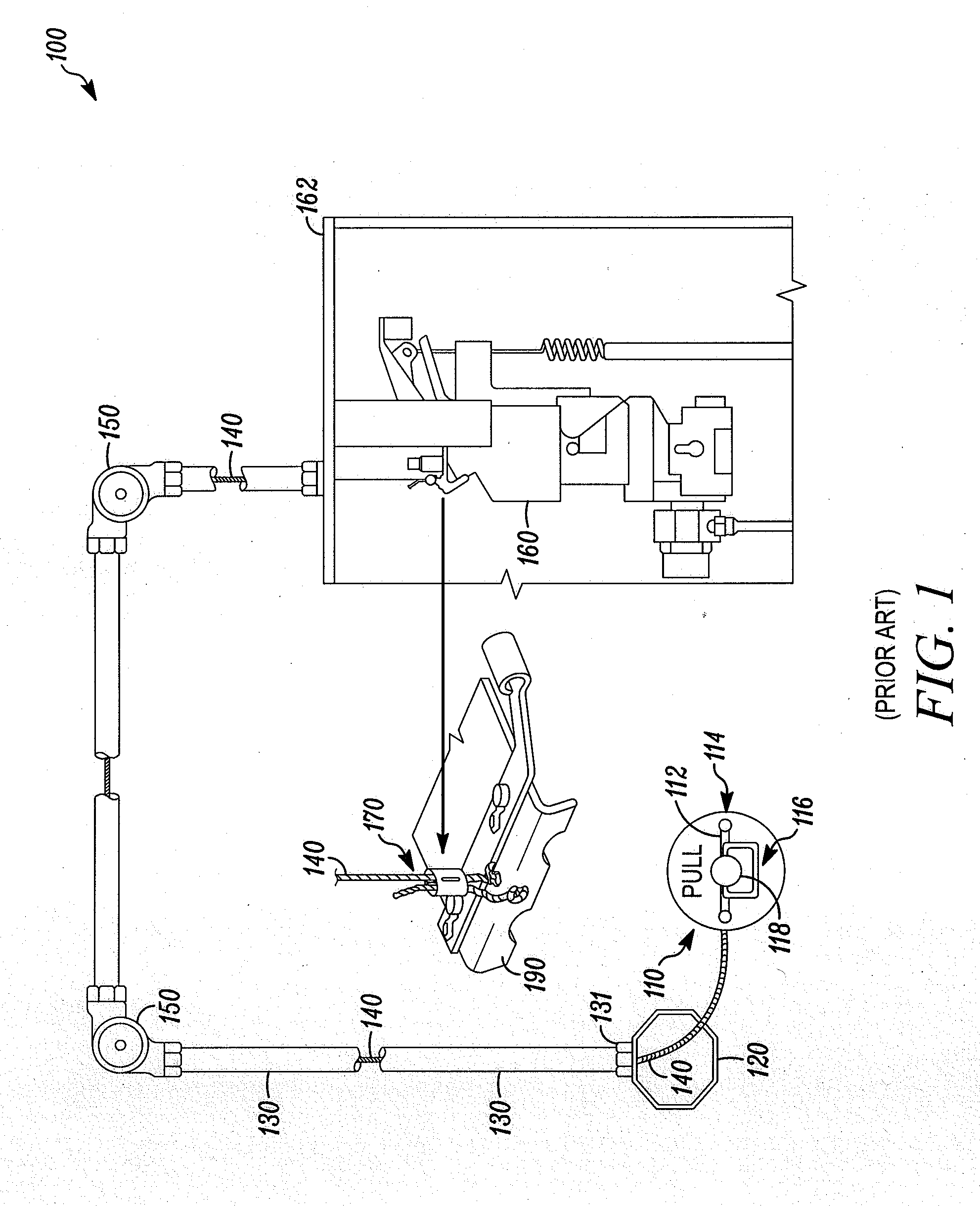Fire Suppression System and Emergency Annunciation System
- Summary
- Abstract
- Description
- Claims
- Application Information
AI Technical Summary
Benefits of technology
Problems solved by technology
Method used
Image
Examples
Embodiment Construction
[0084]FIG. 6 is a block diagram illustrating a mechanical system for connecting the pull handle 416 of pull station 400 to the release mechanism 160 of the fire suppression system using a wire rope 140 contained within a flexible conduit 220. An example of the release mechanism 160 is a panel, such as the Ansul AUTOMAN® panel. Another example of the release mechanism 160 is a valve. Alternatively, flexible conduit 220 may be used to connect pull station 110 (shown in FIG. 1) with the release mechanism 160.
[0085]The flexible conduit 220 may be composed of a variety of types of conduits, such as a Bowden conduit and a braided conduit, as shown in more detail in FIGS. 5A-C. However, the flexible conduit is not limited to these types of conduits. The flexible conduit 220 may include a liner, a liner wrap, and an outer jacket. Though, the flexible conduit 220 does not need to include each of the liner, the liner wrap and the outer jacket. For example, the outer jacket need not be include...
PUM
 Login to View More
Login to View More Abstract
Description
Claims
Application Information
 Login to View More
Login to View More - R&D
- Intellectual Property
- Life Sciences
- Materials
- Tech Scout
- Unparalleled Data Quality
- Higher Quality Content
- 60% Fewer Hallucinations
Browse by: Latest US Patents, China's latest patents, Technical Efficacy Thesaurus, Application Domain, Technology Topic, Popular Technical Reports.
© 2025 PatSnap. All rights reserved.Legal|Privacy policy|Modern Slavery Act Transparency Statement|Sitemap|About US| Contact US: help@patsnap.com



